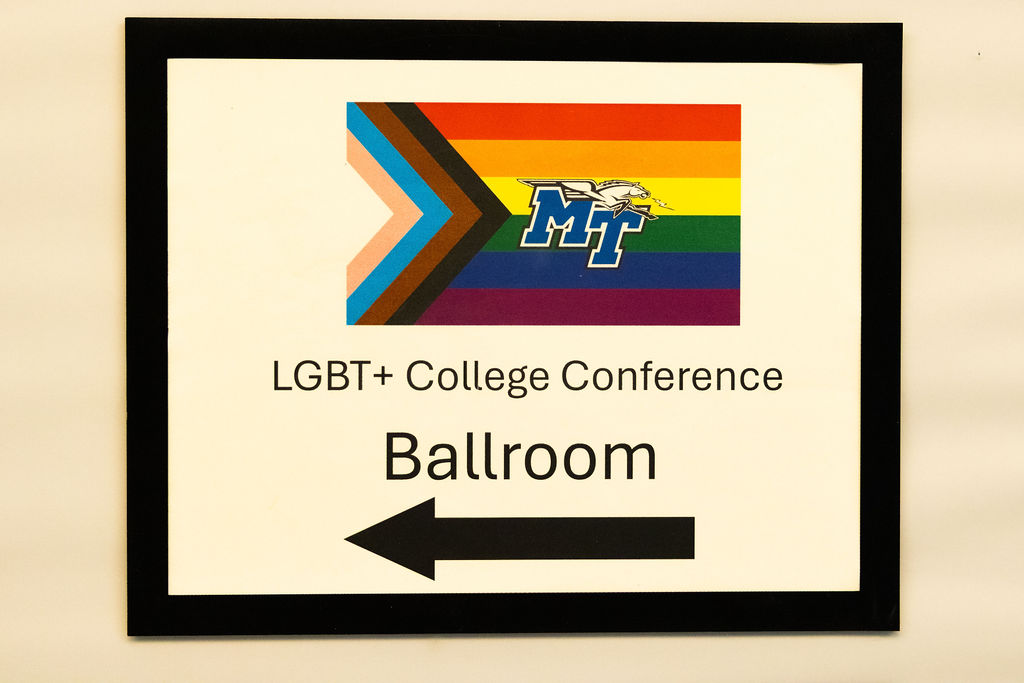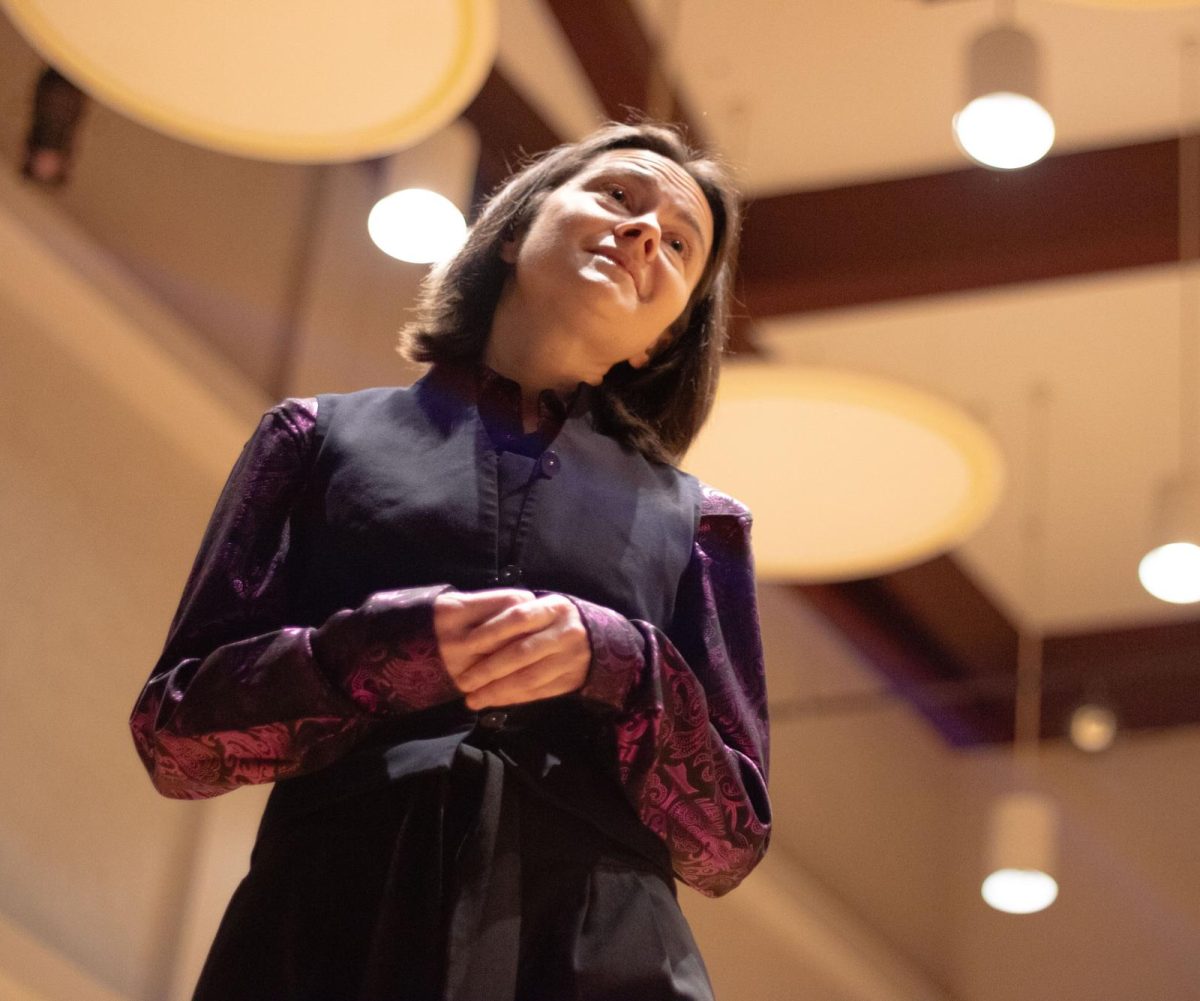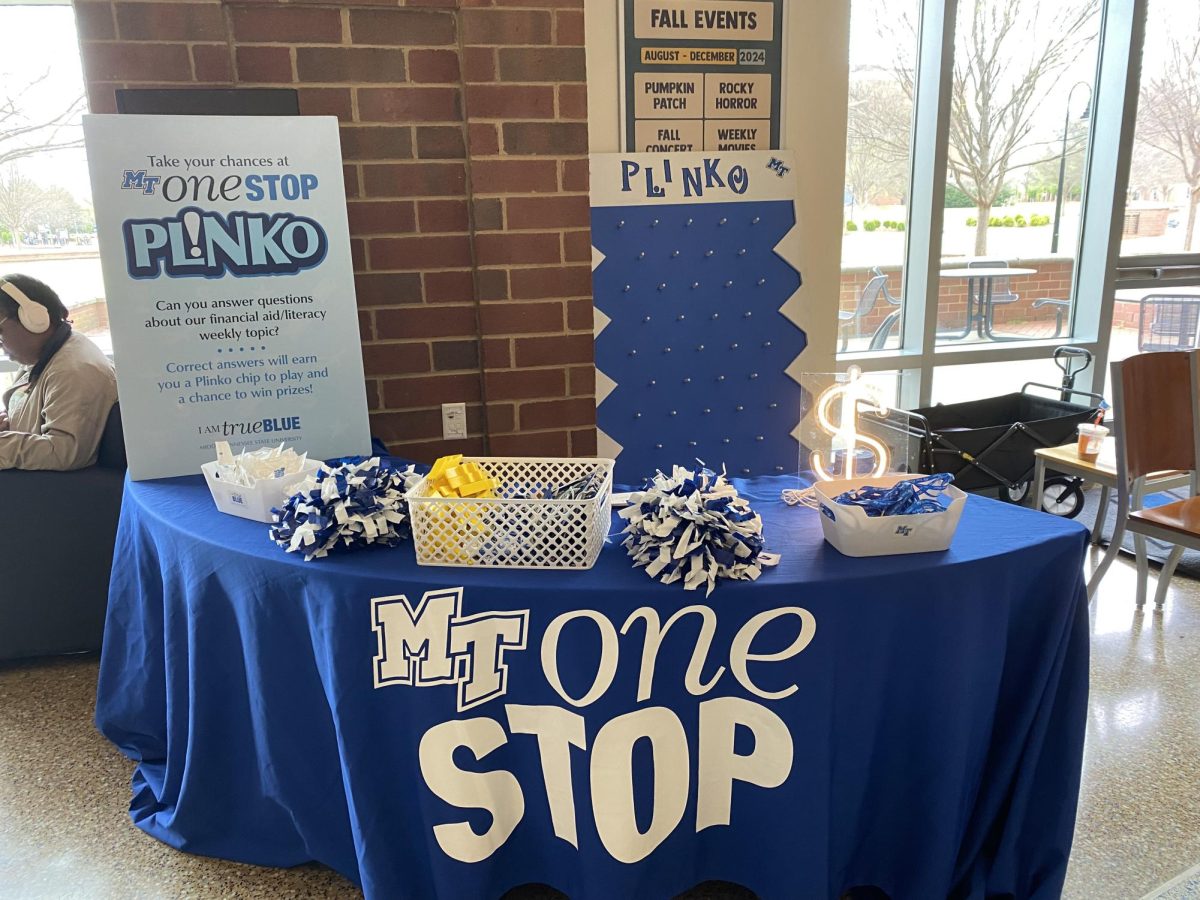Photos and Story by Carley Olejniczak / Contributing photographer and writer
We’ve all seen them around campus. We’ve ogled at them in class and smiled when they’ve walked by in the quad; we’re allowed to look, but never touch.
The service dogs and service animals at MTSU have an important job to do as they skillfully guide their owners safely around the crowded campus. Most students have witnessed these working dogs in action but know little about them.
Below, meet a few of MTSU’s service animals and their owners:
Meet Aaron Wasson and Elroy.
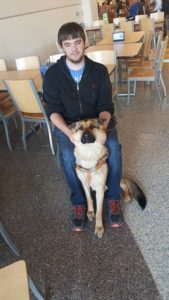
Wasson, a sophomore majoring in criminal justice, has been completely blind since age 10 due to retinal detachment. Elroy, his 2-year old German shepherd, serves as Wasson’s Seeing Eye dog and helps Wasson navigate around campus safely and effectively. He’s trained to memorize his owner’s routes to class, assist him in crossing a street and maneuver through large crowds and other everyday obstacles.
Wasson has only had Elroy for six months. His first guide dog, a yellow Lab named Chip, couldn’t handle the stress of a college campus, and retired shortly after Wasson’s first day at MTSU. But now, with Elroy as his eyes, Aaron can traverse the school grounds with ease.
“Labs are off-road trucks, and German shepherds are Cadillacs,” Wasson said. “When you’re walking with a Lab, you’re bouncing all over. With a shepherd, it’s very smooth. You just go.”
Before Wasson could bring Chip home, they went through a four-week training process at The Seeing Eye guide dog academy in Morristown, New Jersey. The Seeing Eye, the world’s oldest guide dog school, breeds dogs that become service animals and works with the visually impaired to teach them how to effectively utilize their new Seeing Eye dog.
While Wasson stayed at The Seeing Eye, he was matched with his dog, learned commands and how to care for his animal. Wasson was taken through many different real-life situations in which the dog was to properly respond, such as crossing a busy street, subway travel and even being cut off by someone with a rolling suitcase.
Wasson said that having Elroy with him at all times at MTSU is comforting.
“You always know you’re safe,” he said as Elroy rested peacefully underneath his seat.
“With him, you always have somebody that you can lean on,” he said. “You always have somebody with you, even if they can’t talk back.”
Meet Thomas Jones and Blake.
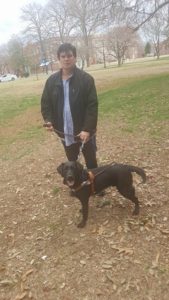
Jones is a sophomore studying political science and international relations. He’s visually impaired, meaning that he can partially see, but is legally blind. Blake, his 3-year-old energetic black Lab, serves as Jones’ guide dog.
Blake, who is from the Guide Dog Foundation in Smithtown, New York, was originally intended to be a veteran service dog, but it was decided that he was better suited for a job as a Seeing Eye dog.
“He’s so smart,” Jones said of Blake. “Dogs like him are said to have an IQ higher than a 5-year-old child.”
Jones said that the best part about having a service dog is the companionship.
“About six to seven months in, you start thinking alike,” he said. “I accuse him of being too good at his job. …I am able to leash-guide him instead of use a harness because he’s so good.”
Unlike Elroy, who is extremely docile, Blake is a firecracker. Though excellent at guiding, Blake is always excited to see everyone, and Jones often has to rein him in.
“People ask to pet him all the time,” Jones said. But he almost always has to tell them no. “I try to limit the distractions for him that sidetrack him from working.”
Blake spends every day on campus performing his duties to the best of his abilities for Jones, but when the two are at home together, he’s just a pet.
“I play outside of Peck Hall everyday with him,” Jones said. “At the end of the day, he’s just a dog. You got to let him be a dog.”
Meet Paige Saylors and Inca.

Saylors, a senior majoring in early childhood education, is another visually impaired student who struggles primarily with depth perception. Inca, Saylors’ 5-year-old black Lab-golden retriever mix, assists her around campus, specifically helping her walk up and down steps.
In her time as an MTSU student, Saylors has had minimal complications with having a dog with her everywhere she goes.
The Disabilities and Access Center (DAC) never denies a student the right to have a service animal on campus, as long as the dog is properly cared for, according to DAC Director Lance Alexis. (This isn’t to be confused with Emotional Support Animals, which aren’t certified service animals and can be denied on campus)
Saylors explained the only real problem she’s ever experienced with having Inca at MTSU. The director of the preschool Saylors was working at for her child education class told her that she could not have Inca in the room with the children. Saylors went to the DAC to help resolve the issue. Everything was sorted out, and Inca is now allowed in the classroom with the kids, who all love her. They even have a special segment in their curriculum now that teaches the children about service dogs.
There are pros and cons to having a service animal. For Saylors, the worst part is all the attention it attracts.
“People stare all the time,” she said. “People act like they have never seen a dog before when I walk through the place.”
Saylors said that she doesn’t want to be treated differently because she has the need for a guide dog.
“I don’t want to be classified as handicapped,” she said.
But the good outweighs the bad.
“One of the big reasons I have Inca is to have somebody there all the time.” Inca sat by her owner’s side with the relaxed demeanor of a seasoned service animal.
“She’s not just my service dog. She’s by buddy.”
Bio: Carley Olejniczak is a sophomore studying journalism at Middle Tennessee State University. Follow her on Twitter at @cm_olejniczak.



